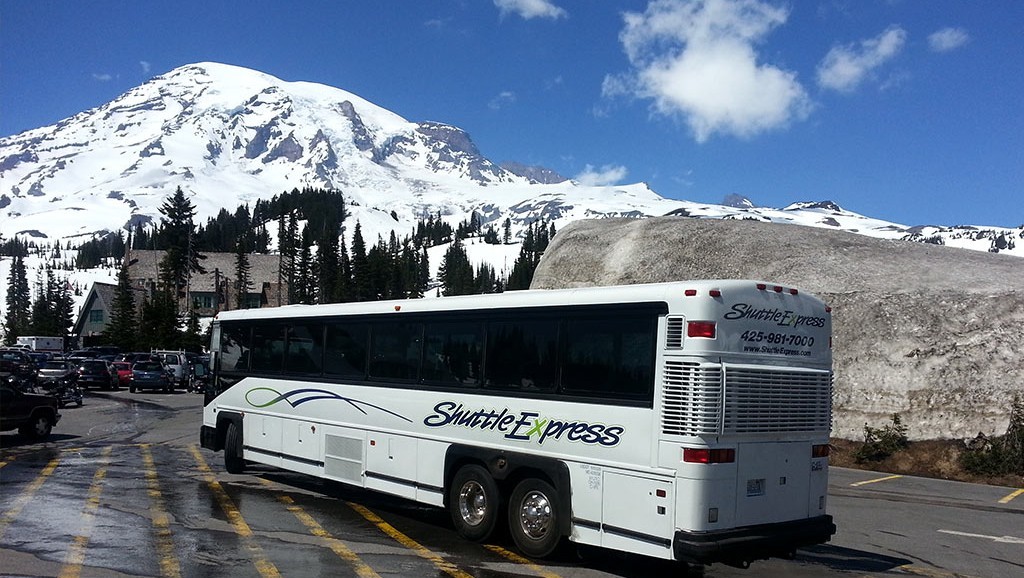20 Best Facts For Choosing Event Transportation Sites
20 Best Facts For Choosing Event Transportation Sites
Blog Article
Top 10 Tips For Scheduling And Flexibility Of Shuttle Service For Employees
Here are ten top tips for maximizing the flexibility of shuttle services for employees and scheduling.
1. Employee Needs Assessment
Begin by assessing the schedule needs of your staff. This can be achieved by conducting focus groups or surveys to find out their preferred shuttle times, shift patterns, and any other specific needs. Understanding the diverse requirements of your employees is essential to create the perfect schedule for everyone.
2. Implementing a Flexible Scheduling system
Create a flexible, adjustable scheduling system that can allow adjustments based on the employee needs. You might consider offering shuttles at various times of the day, to accommodate a variety of schedules and patterns. You could consider offering shuttle service during the day for employees working first shift, during the day for those who have flexible schedules and at night for those who work second or third shift.
3. Real-Time information is utilized to tweak the system.
Include technology that allows you to obtain real-time information on employee numbers and their travel patterns. This data helps you make more informed choices regarding adjusting shuttle times or adding new routes. The analysis of data about usage patterns can help you improve your scheduling in order to meet demand.
4. How do you set up the Reservations System
Think about installing an automated shuttle system. The system allows employees to reserve their seats ahead of time, ensuring there are enough seats available to meet the demand. A reservation system will also help you identify high-demand times and adjust your scheduling to meet demand, increasing overall efficiency.
5. Communication Changes to Schedules Efficaciously
Make sure that any changes to the shuttle schedule are communicated clearly and promptly to all employees. Utilize multiple communication channels to keep employees updated, such as emails and the intranet of your company, as well as mobile applications. It is important to convey information clearly to avoid confusion and so employees are able to organize their travel plans.
6. Monitor Peak Utilization times
Be aware of the usage of the shuttle and identify the busiest times. You can use the information to make adjustments to your schedule to ensure that there are more shuttles on hand in busy times. It is possible to increase the reliability of services and decrease employee wait times by proactively managing the peak use.
7. Offer on-Demand Services
Look into the possibility of a service that is available on demand for employees with a variety of times of work. Apps that allow employees to order the shuttle at any time they wish to could be used. The availability of on-demand services can enhance flexibility and permit flexible working hours.
8. Consider Hybrid Models
Create hybrid scheduling models that mix fixed routes and flexibility. During peak hours like, for instance, you may be able to establish fixed routes, but allow flexible pick-ups or drop-offs at different times. This could improve efficiency while accommodating various timetables.
9. Collect feedback to ensure Continuous Improvement
Encourage employees provide feedback on shuttle schedules and the overall experience of transportation. Reviewing feedback regularly will help you to pinpoint areas in need of improvement and then make any necessary adjustments to your schedule. Participating your employees in this process can create a a feeling of ownership that can lead to an improved shuttle service.
10. Assess and adapt to seasonal changes
Be mindful of seasonal shifts that can impact the schedules of employees. Review and update the schedule of shuttles so that it is able to accommodate changes in the availability of employees. Flexible scheduling during these times could aid in maintaining high levels of participation as well as satisfaction.
These suggestions can help you create an effective and responsive scheduling system for employee shuttle transportation to ensure that it meets the requirements of your workforce and maximizes effectiveness. See the most popular visit website for employee transportation for site advice including ground transportation, dallas airport shuttle, miami airport shuttles, shuttle buses to lax, transportation private, airporter bus, direct transportation, transportation private, los angeles airport shuttle service, san francisco airport transport and more.
10 Tips For Budgeting And Cost Considerations For Corporate Events Transportation Services
Here are 10 great ideas for cost and budget considerations for a corporate event transportation:
1. Complete a Cost Analysis
Begin by performing a detailed cost analysis of the various elements of your transportation services. This includes vehicle rentals or leasing costs as well fuel expenses, salaries of drivers, insurances, maintenance, and other costs. Knowing the total cost can help you develop a an achievable and realistic budget.
2. Create a clear budget framework
Establish a clear budgeting structure that defines how much your organization is willing to invest in transportation. The budget should contain every cost identified, and allow the flexibility to cover unexpected costs. Budgets can to guide your choices and ensure that transportation costs are kept in check.
3. Take a look at different transportation options
Think about the various transportation alternatives for your event. This could include vans, shuttles or ride-sharing services. Consider factors such as ease of use, capacity and comfort when evaluating the costs of each choice. By selecting the cheapest option, you will be able to maximize your budget for transportation.
4. Handling Transportation Service Providers
When choosing a transportation provider make sure you negotiate contracts to get the most competitive rates. A lot of transportation companies offer discounts to big events or bulk bookings. Good relationships with service providers can allow you to get better rates and better services that will eventually help your budget.
5. Plan Costs for Fuel
Costs for fuel are a major factor in transportation expenses. The distance from the location and the anticipated amount of trips are important. To save money consider negotiating with the transport company who uses for vehicles that are fuel efficient.
6. Include Contingency Funds
Allocate a portion of the budget for contingency funds to cover the unexpected expenses. Transporting can be unpredictably and could result in issues such as breakdowns in vehicles or extra trips needed. Having contingency funding ensures that the situation can be dealt with without compromising quality or overspending.
7. Packages and discounts for groups are available.
Check out discount packages for groups or group bookings offered by transportation providers. Many companies offer discounts for large groups, corporate events and special occasions. This can help you save some cash. Find out if there's any packages that offer discounted services, like on-site coordination or additional vehicles.
8. Monitor and track expenses
Maintain a close watch on all transportation-related expenses throughout the planning and execution phases. Use spreadsheets or budgeting programs to keep track of your expenses in real-time. The monitoring of costs will help identify areas the areas where you can save and helps keep your budget in line.
9. Gather feedback for future budgeting
After the event is over, you should collect feedback about attendees' transportation experiences and costs. Reviewing feedback can help you gain insights into the effectiveness of the transportation company, and informing future budgeting. Understanding what is working and what doesn't make a difference in the event budget.
10. Determine the Total Cost of Ownership
When evaluating transportation options, evaluate the total cost of ownership (TCO) for the vehicle. It is not just the initial purchase or rental price, but also the ongoing expenses including maintenance, insurance, and depreciation. Knowing TCO will help you make well-informed decisions to balance the initial cost with the long-term financial consequences.
By following these tips, organizations can effectively control costs and make educated budget decisions for corporate event transportation. A well-planned budget guarantees that the transportation requirements are addressed, but also aids in the overall success of the event, making it possible for attendees to concentrate on the event and not issues with logistics. A well-planned budget and cost management will boost the credibility of your business and demonstrate that you are committed to efficiency and accountability. Take a look at the recommended event transportation service for website advice including transportation solutions, transportation management solutions, companies that transport, safe transportation, transport and logistics, transport mgmt, luxus transportation, safe transportation, vehicle transport service, transportation management system and more.